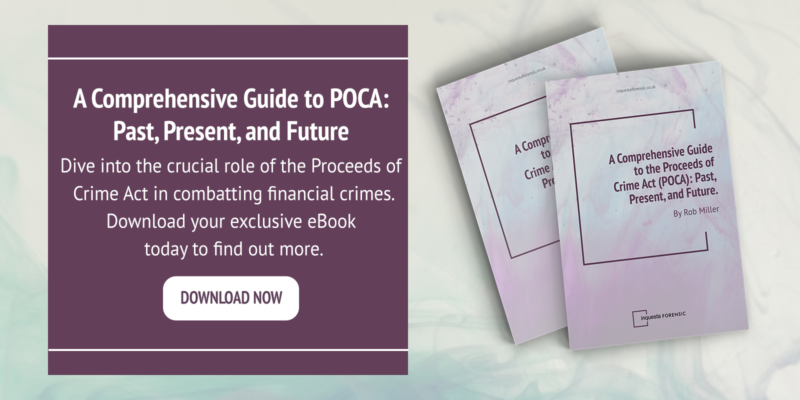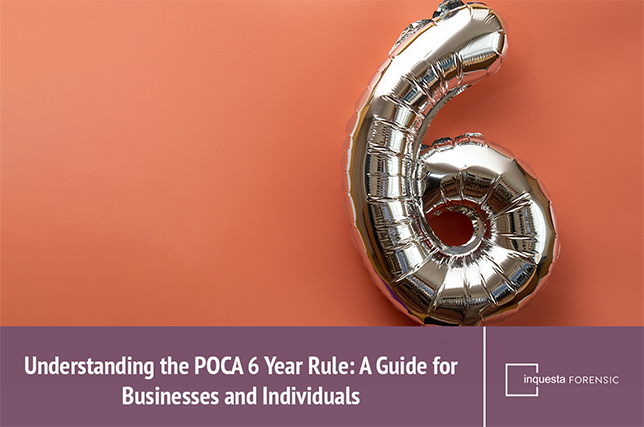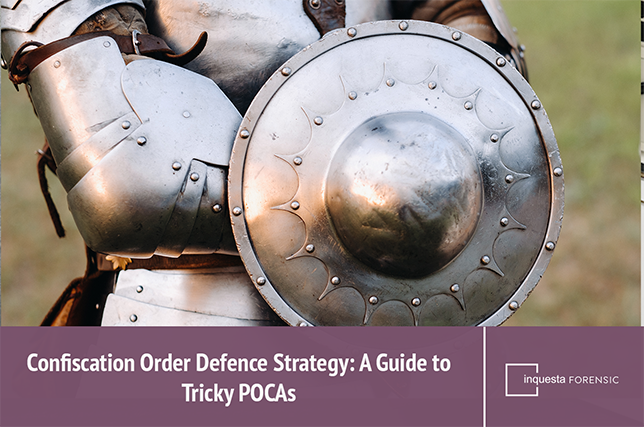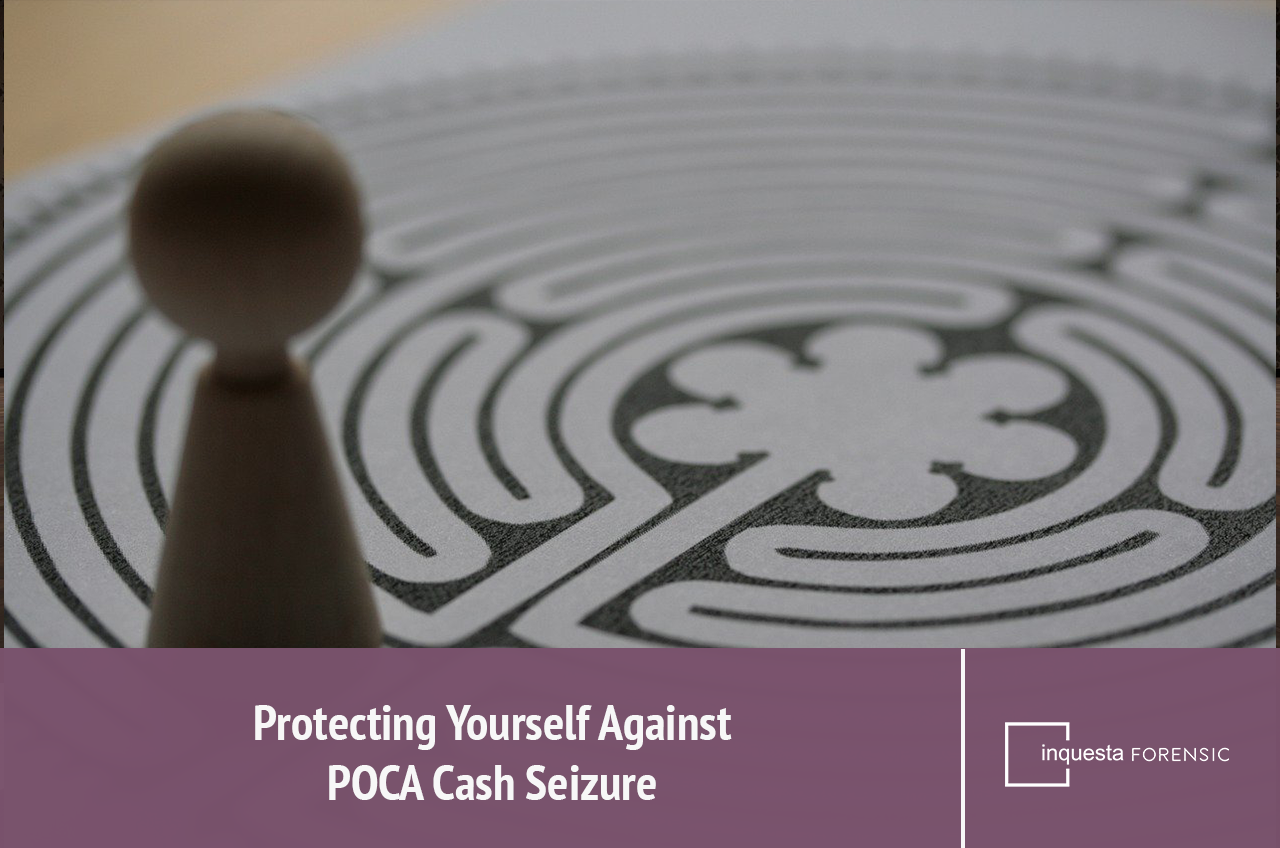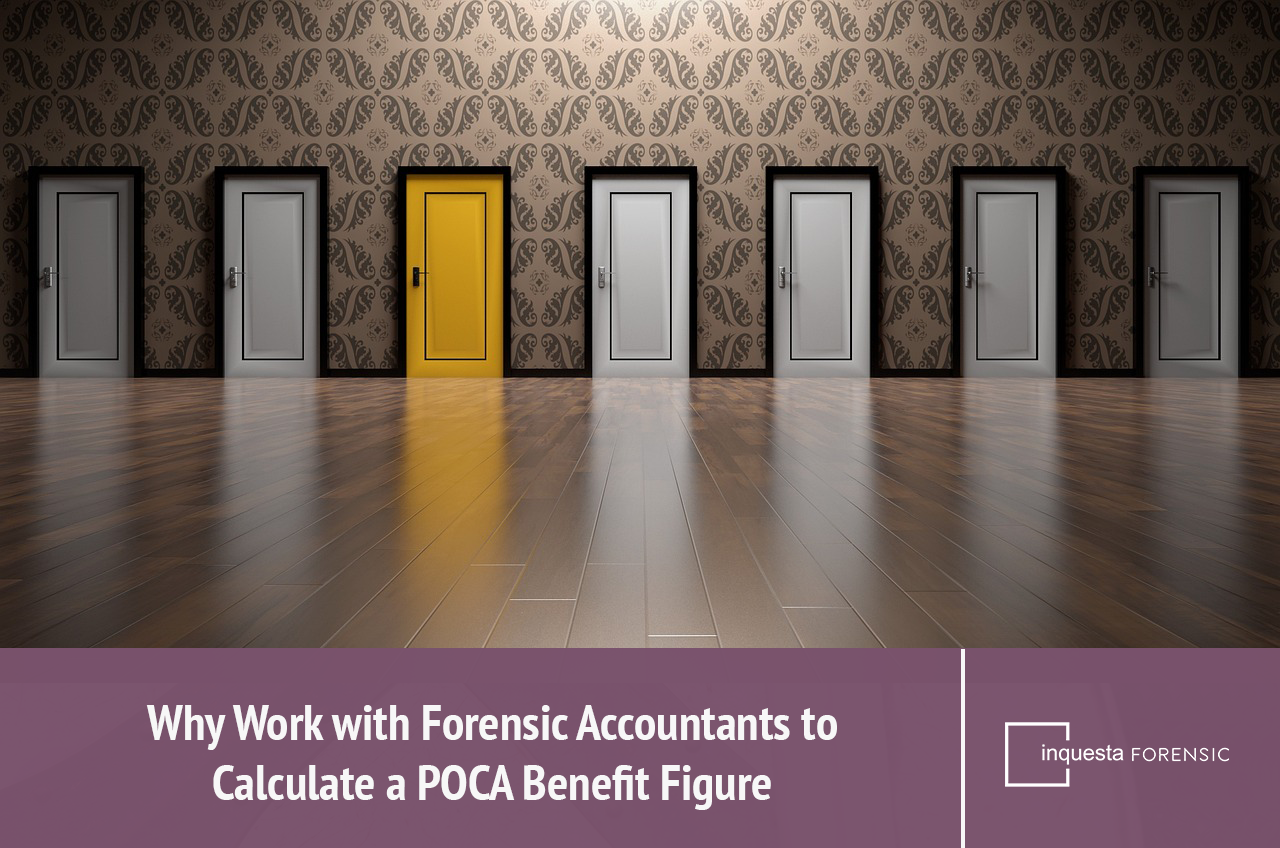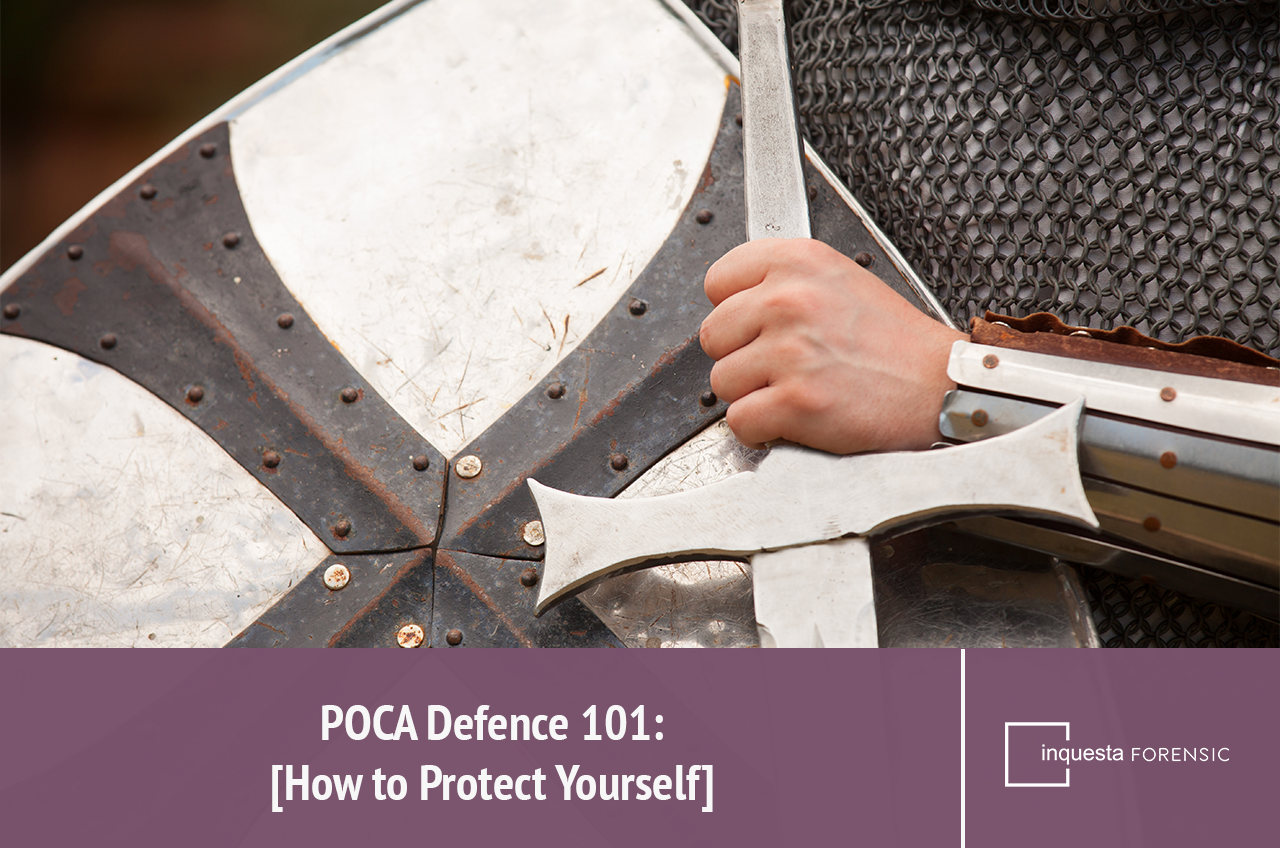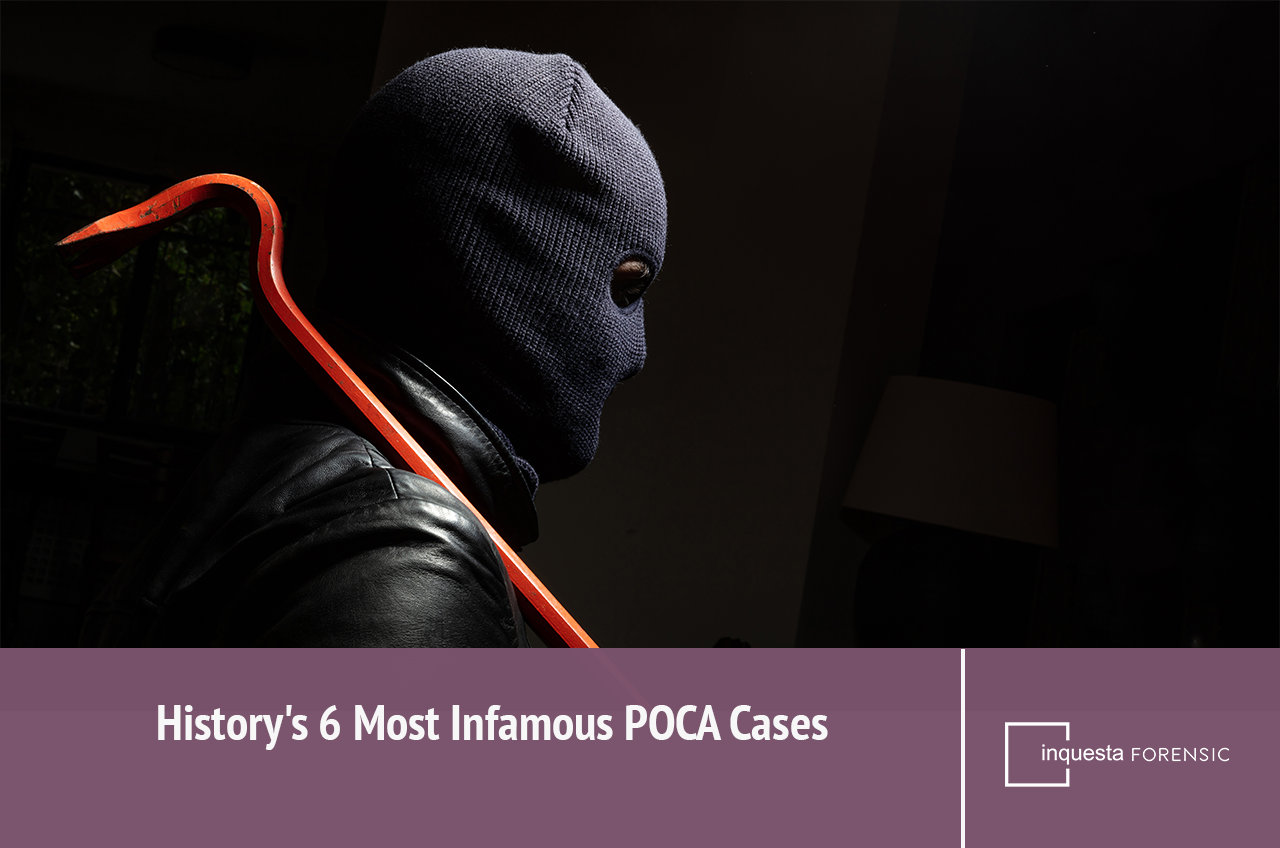Unearthing the secrets behind the legal process of Proceeds Of Crime Act (POCA) hearings, and the intricacies of POCA benefit figures and available amounts, requires a journey into the heart of financial investigations.
This blog aims to help you to better understand the foundations of confiscation hearings in financial crime cases. From unravelling how the POCA benefit figure is calculated, to dissecting the nuances of the available amount during proceedings, and discussing the important role a forensic accountant can play throughout.
This guide aims to demystify all of the intricate steps involved. Join us to navigate the maze of calculating POCA benefit figures and determining available amounts in the context of the Proceeds of Crime Act.
What is the POCA Benefit Figure?
The POCA benefit figure refers to the total value of the financial gains a person obtains through explicit criminal activities, such as fraud, money laundering, corruption, etc. This amount is the foundation to determine the confiscation amount in legal proceedings related to serious financial crimes.
For example, if a defendant was found to be guilty of laundering money to the value of £50,000, their benefit would be this amount, plus any other benefit from general criminal conduct.
Calculating the POCA Benefit Amount
Calculating the POCA benefit amount will involve comprehensive analysis of financial transactions and any assets associated with the defendant’s criminal conduct. It requires identification of all ‘benefits’, evaluating outgoings, quantifying any undisclosed income, and considering additional factors that could have led to financial benefit. (reputation/influence boosts, intangible assets, etc.)
A step by step guide on how to calculate a POCA benefit amount includes the following:
- Identify All Traceable Assets and Income: Experts will meticulously trace and identify any and all assets and income the defendant has that could be linked back to criminal activity. This usually includes in-depth scrutiny of bank records, business interests, property holdings, and any other financial instruments found.
- Evaluate Expenditure: To best determine the defendant’s net benefit, it is important to also assess the expenditures. This will require scrutinising all personal and business expenses during this period to establish as clear a picture as possible regarding the sum of financial benefits derived from criminality.
- Quantify Undisclosed Income Sources: Not everybody will leave the money and assets they’ve received through their criminal lifestyle readily accessible. This is why it’s so vital to uncover undisclosed and concealed income as soon as possible.
- Consider Any Non-Financial Benefits: It is possible for a criminal to gain significant financial benefits from their illegal conduct besides the exchange of money. These non-financial benefits, such as boosts to reputation and influence, misappropriated intellectual property, and networks/connections, could also contribute to the POCA benefit figure.
- Calculate: With all of these factors in mind, an expert will then use advanced financial techniques to calculate the total POCA benefit figure as accurately as possible. This process will involve highly complicated calculations, as well as a deep understanding of the financial systems in place.
Once the benefit has been calculated, the focus of a proceeds of crime act case will likely then turn to the ‘available amount’.
What is the ‘Available Amount’ During a POCA Case?
The POCA available amount is a vital step during confiscation proceedings. This sum represents the total value of a defendant’s assets that are considered recoverable. The available amount will play a major part in determining the confiscation order total, which will be the amount the defendant is expected to pay back.
Calculating the POCA available amount will require thorough examination of a defendant’s incomings and outgoings. Key steps in the process are as follows:
- Identify Assets: Including money and assets owned or controlled by the defendant, it is important that absolutely nothing is missed during the process.
- Value Assets: Every asset identified will then be assigned some monetary value. This will be based on either its market or fair value at the time. This stage is vital to determine the total worth of the defendant’s assets.
- Offset Existing Liabilities: Any existing and outstanding preferential debts/obligations must also be considered and subtracted from the total value of the defendant’s assets. The resulting amount will be the net value that can be considered ‘available’ for confiscation.
- Identify Hidden Assets and Tainted Gifts: It’s vital that you thoroughly investigate to uncover potential hidden assets or gifts with ‘tainted’ origins. This is crucial to ensuring a comprehensive assessment of the defendant’s financial position, and to prevent the omission of any possibly relevant assets from the calculation.
In addition to this, there are a number of factors that must be considered when determining the available amount:
- Restraint Order?: If a restraint order is in place during legal proceedings, it will restrict the defendant’s ability to access certain assets. This will have to be taken into account when determining the available.
- Third Party Interests: There may be some third-party interests taken into account when determining how much is to be confiscated. The interests of family members, friends, business partners, etc. may impact the available amount that will be subject to confiscation.
What a Forensic Accountant Offers When Calculating your POCA Benefit Figure and Available Amount
The process to calculate a defendant’s POCA benefit figure and available amount requires a great deal of work. In order to ensure that this process has been completed properly and to the letter, you may wish to consider a forensic accountant. A forensic accountant is perfectly placed to both challenge and defend POCA benefit figure calculations to ensure total accuracy.
So whether you’re looking to challenge or defend POCA benefit figure/available amount calculations, working with an experienced forensic accountant will provide numerous advantages, including:
Financial Analysis Expertise
Forensic accountants bring with them a specialised set of skills onto every case they support. These skills are honed through extensive training and experience in financial analysis and investigation. When it comes to Proceeds of Crime Act (POCA) benefit figures, this expertise and knowhow allows them to navigate even the most complex of financial landscapes.
Forensic accountants have a deep-rooted knowledge and understanding when it comes to core accounting principles, financial regulations, and investigative techniques. This makes a forensic accountant indispensable when it comes to conducting thorough examinations into the financial records of a defendant.
With a specialist forensic accountant on your side, you can ensure that every financial aspect relating to criminal activities is meticulously scrutinised, with no stone left unturned. This will pay huge dividends when it comes to the accuracy and reliability of a POCA benefit figure and available amount calculations.
Advanced Techniques and Training
The world changes very quickly. This is no different when it comes to financial crime. In the ever-evolving landscape of financial crimes, a forensic accountant is able to leverage their catalogue of cutting-edge tools and techniques to go above and beyond conventional methods.
Forensic accountants are able to locate anomalies in reams of data, identify patterns in numbers, and uncover hidden financial trails that could be crucial in determining the accuracy of a POCA benefit figure and available amount.
If you can effectively harness this technology and expertise, you can ensure as comprehensive a case as possible.
Expert Witness
Should it be necessary, a forensic accountant is able to play a pivotal role in the court process. As part of the role, forensic accountants are regularly tasked with appearing in court to present their findings.
However, this is unlikely to be useful for the case if nobody in the room understands what can often be highly complex and difficult to understand data and statistics.
Therefore, a major part of the role requires forensic accountants to learn how to present their findings and data as clearly as possible. They will often present their findings in a clear and organised manner, making it as easy as possible to understand for everybody in the room, no matter what their position or background.
Collaboration Skills
A forensic accountant will very rarely work in isolation. They will generally be collaborating and working closely with another expert or legal team on all manner of different issues, including during confiscation proceedings.
A forensic accountant can provide valuable insight into the financial implications of a person’s criminal activity, strengthening the case as a whole and improving the team’s collective knowledge.
The communication skills forensic accountants are able to effectively utilise in order to present evidence when acting as an expert witness, also comes in extremely handy when it comes to communicating complex financial concepts to interested parties in as simple and cohesive a way as possible.
Why Work with Inquesta Forensic to Calculate a POCA Benefit Figure
On the complex roadmap of POCA proceedings, choosing the right support is the difference between success and failure. Inquesta Forensic has all of the expertise and experience you could ever need when it comes to challenging and defending POCA benefit figure calculations, and much more besides.
Our team of seasoned forensic accountants offer a unique set of skills and diverse backgrounds supporting people through a wide variety of different cases.
Our expertise when it comes to financial analysis and investigation goes far beyond simple, conventional methods. We are able to utilise our past experiences and superior training to meticulously scrutinise financial records and transactions.
Collaboration is at the core of our approach. We take pride in our abilities to work closely with legal teams and provide valuable insight to strengthen the overall case at every juncture, where possible.
In the pursuit of justice, make sure you place your trust in experts who understand the intricacies of financial landscapes and have seen it all before — choose Inquesta Forensic and get onto the path to success today. Contact a member of our team today to find out more about what we can do to help you.
- The Essential Role of Forensic Accounting in High Net Worth Divorce
- How to Value a Startup Business: A Guide for UK Entrepreneurs
- Pig Butchering Scams: Guide to Crypto Romance Fraud
- Shareholders’ Disputes: How Business Valuation Helps with Shareholder Dispute Resolution
- 11 Costly Business Valuation Errors (And How to Avoid Them)


